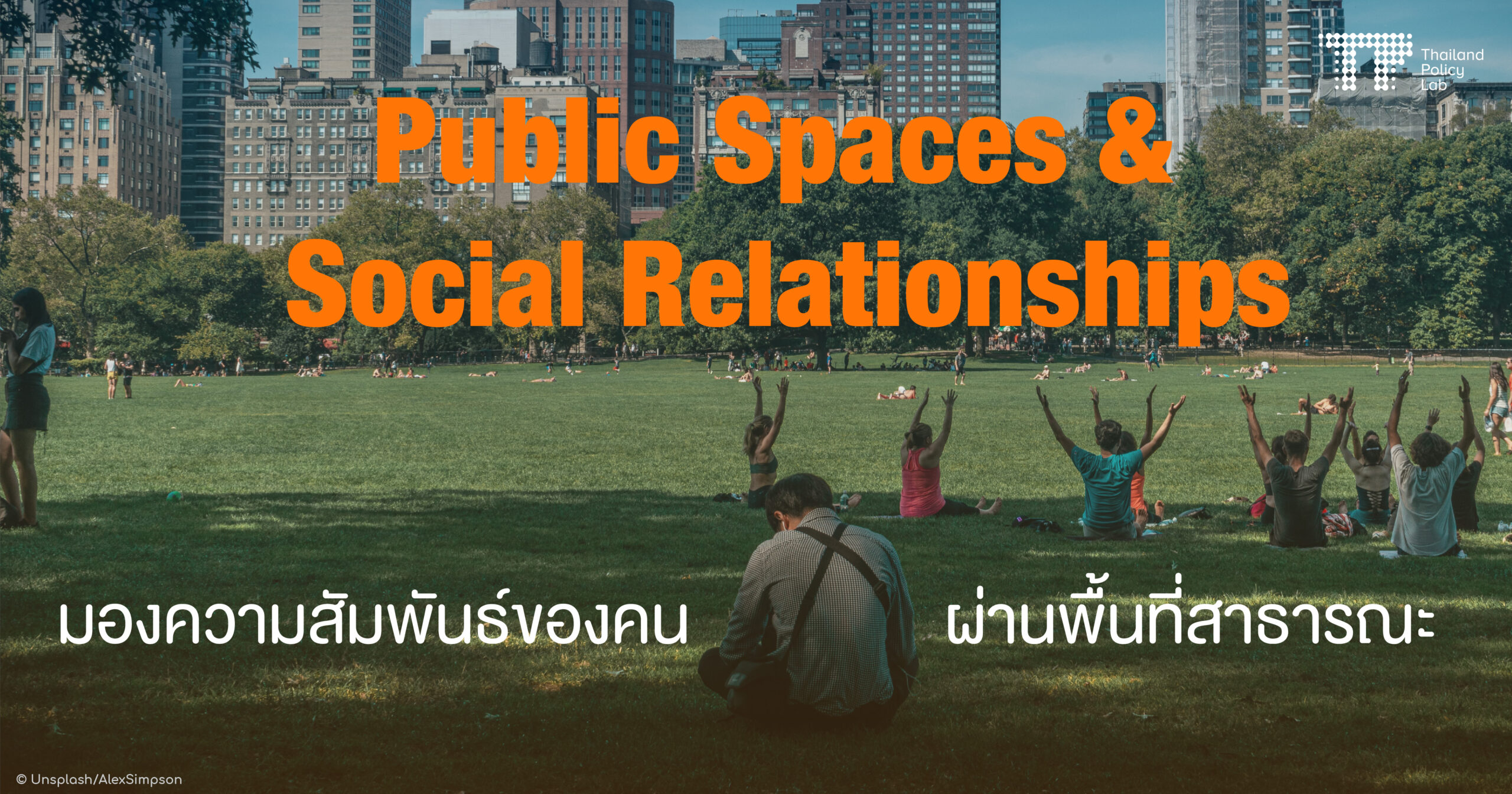1.Bangkok is also known as “Venice of the East,” the Chao Phraya river running across the city was once the main commuting route that brought wealth and prosperity. But Bangkok is no Venice in terms of romance. The canal where small speed boats almost always run into each other, the rivers packed with cargo ships, the boats in which commuters need to hurriedly grab the handles for survival after commuter boats, carrier boats, and the local’s boats have fiercely splashed the water onto their clothes, these are the common sceneries in Bangkok, the city where urban planning and public transportation does not guarantee any safety. If your eyes wander off a little, you might fall off the footpaths before falling in love. In reality, life in Bangkok is nothing resembling a romantic comedy movie; there is no protagonist who will turn back and ask “Are you alright?” In fact, they will hurriedly walk away for fear of the contagious stain.
2.Public space is part of target 11.7 of “Sustainable Development Goals” which is concerned with the inclusive public access to urban green spaces that will strengthen the connection between the economy, society, and environment in urban and rural areas. Simply put, the increase in public spaces will help improve many potentials such as impetus for economic growth and inspiration for creativity among youths. It will also help create more spaces for relaxation where we can stroll leisurely after a long work day and might accidentally bump into soulmates provided by Trimurti Gods. If the city does not provide good public spaces, it will lessen our opportunities to meet someone new in real life. Also, don’t mistake department stores as public spaces! Although people can access them anytime, they are still owned by private entities. And public spaces are not limited to Khlong Ong Ang; they include public libraries, public restrooms, public benches, footpaths and the nearest parks we can visit anytime.
3. While Thai students need to wake up early to avoid traffic congestion and arrive at schools on time, the South Korean government has tenfold increased its expenditure to create more public spaces especially catered for youths and children. This is an investment for the future intending to support the city expansion. Even though Bangkok has more than 8,000 public parks, people need to travel at least 5 kilometers to access the nearest one, according to a survey. In order to avoid traffic jams, some car users have resorted to public transport, but to no avail, its inefficiency and unpunctuality especially when a rainstorm comes makes public transport unfunctional, and hardly tolerable. Bangkok ranks the fifth as the most stressful city in Asia indicated by hecticness and inefficient basic infrastructure. When the basics are not secured, how can people find and invest in relationships?
4.Singapore is much smaller than Thailand but the number of their green spaces is much higher; there is 66 m² of green space per individual in Singapore while there is only 6.23 m² of green spaces per individual in Thailand despite the World Health Organization recommendation that each city needs a minimum of 9 m² of green space per capita. In South Korea, the mayor of Seoul decided to overhaul the highway and roads, and turned them into public spaces in the middle of the city which is known as “Cheonggyecheon.” If you cannot imagine how ideal public spaces should look like, let’s revisit Japanese animes in our childhood memory: the playground where Nobita and friends meet up every evening after school or wide footpaths where couples can flirt with each other without having to avoid utility poles, pedestrian overpasses, and advertisement boards.
5.The Bentway is a public space under the highway in Toronto, Canada. On the outside, it looks similar to Thailand’s underpasses, but on the inside it has many functions that the public can utilise to its fullest potential. Meanwhile, some underpasses in Bangkok are considered dangerous, citizens are afraid to use them despite the attempt to turn the them into inclusive public spaces. Not to mention concerns about safety, noise pollution and air pollution that should be controlled according to sustainable development goals. Love will flourish as long as Bangkok has good public spaces. Investment in public spaces is important for every city in this country so that we can take a walk in the park whenever we feel lonely and watch a variety of people exchanging liveliness in a truly “livable city.”
